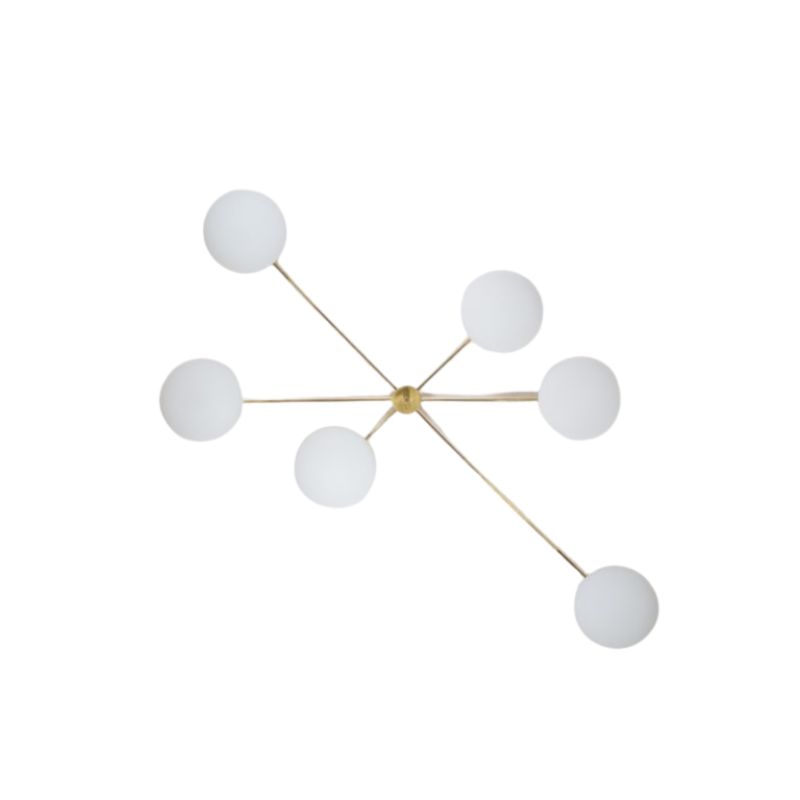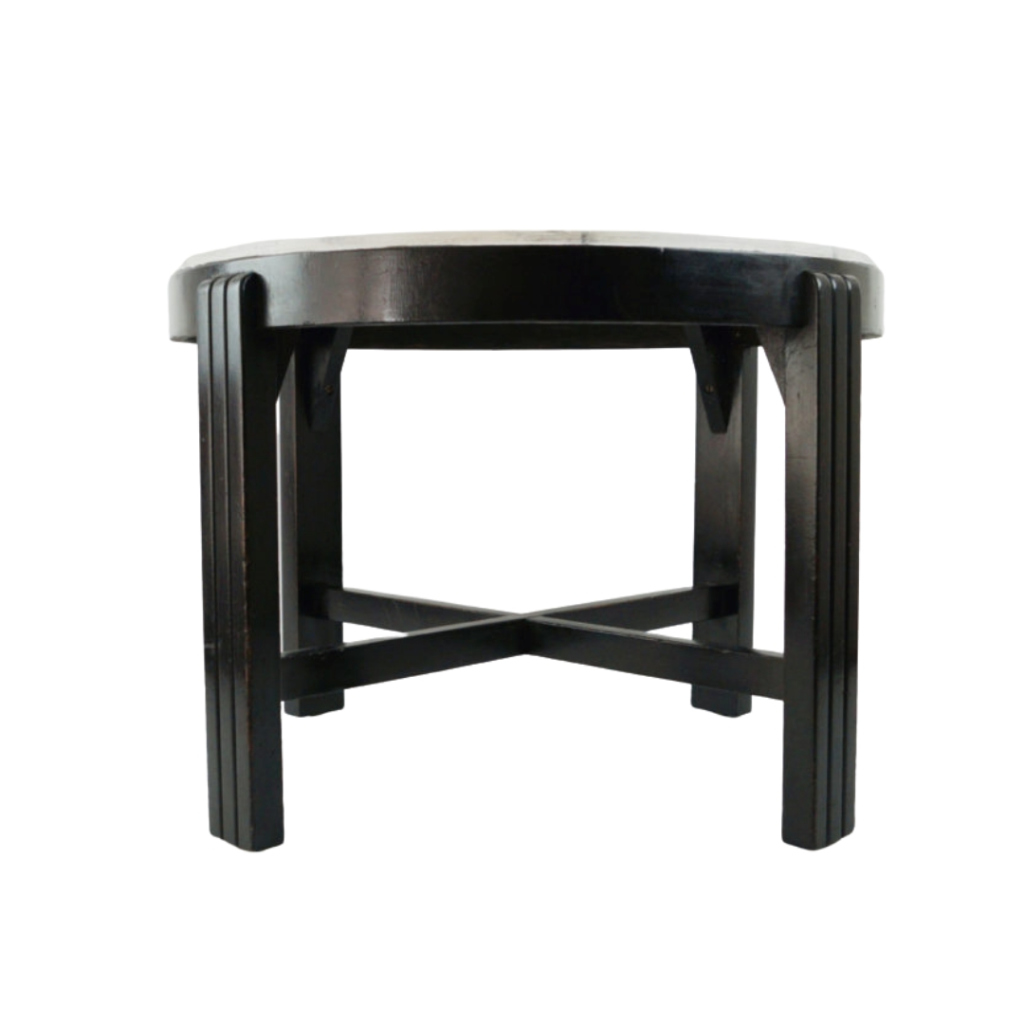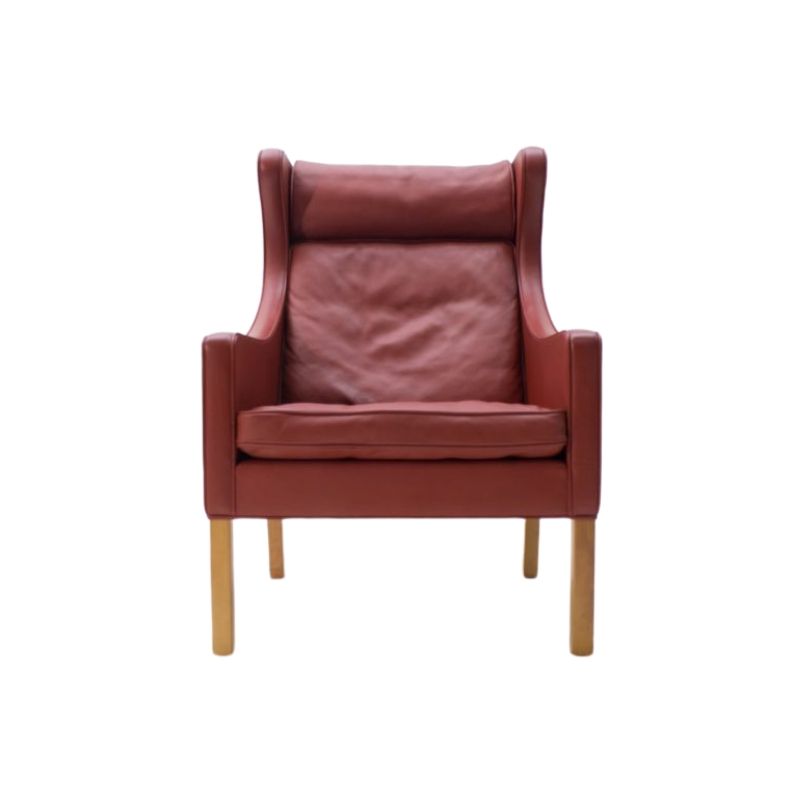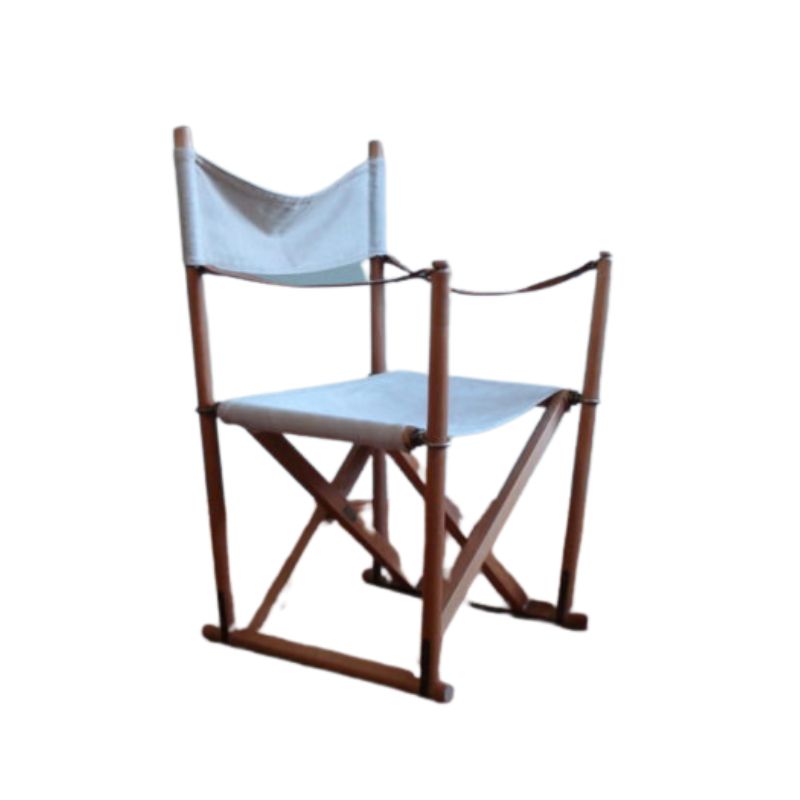Now I've done it. I bought one of these Faarup credenzas. It is in good shape, but missing one of the tambour doors. So I need to make two new ones. I understand the general issues of making canvas backed tambour doors, but am at a loss as how to cut them so it looks like one piece of wood when closed. Any saw kerf would disturb the grain pattern from one board to the next. How is this done? Thanks

Good question. The grain ...
Good question.
The grain shows that the face of the tambour is teak veneer. And from there I think the rest of the story tells itself, at least mostly. The builder must make a fairly conventional tambour door with veneer on the slats creating the invisible appearance. I am not sure whether the veneer would be cut beforehand with a guillotine, large format paper cutter, or other scissors like contraption, or whether it would be glued and then cut with a razor knife between the slats.
I think it would be difficult to cut it with a knife and not make a mistake especially with the grain pulling the knife around. So if I had to guess it is sliced beforehand and then individually glued to the slats.
I suppose it is also possible with the right substrate material, and the right guillotine, you could veneer a sheet of substrate and then chop the slats.
Probably somebody else here knows just how this was done. But you should also be able to get more information from a close examination of the existing tambour.
Just an idea.
I've never done anything like this before, and I think you're in for a challenge, but here goes off the top of my head:
Top-quality plywood for the slats. Baltic or ApplePly. Accurate machining and close tolerances are critical.
Somehow clamp the slats tightly together on a flat surface in their final configuration face-up.
Apply face veneer by whichever method most appropriate (no vacuum).
Remove from clamps and flip assembly over, veneered face down.
Slip a thin and slightly convex sacrificial strip underneath and parallel to the slats to slightly open the joints between (hopefully not not glued together) and slice through the veneer with a sharp blade from the back side.
Repeat process on the reverse side with appropriate canvas.
I'm not sure if a counter or backing veneer is necessary in this case and I'd recommend using a paper-backed veneer.
I'd also advise consulting a cabinet shop that veneers their own panels as the process seems ambitious even for a seasoned DIY-er.
Tktoo: regardless of how...
Tktoo: regardless of how this was done in a production environment with special purpose tools, jigs, and the like, would this not be fairly straightforward to do by veneering the individual tambour slats and then gluing them to the backing clothe? I can foresee the whole process without the need for any unusual tools, even tough it does require great precision and a lot of repetition.
Glassartist: can you pull the existing tambour out and show us some close up photos between the tambour strips?
Oh and I've been very satisfied with using a heavy silk and hemp blend fabric and titebond II to glue it on in the last tambour repair I did.
Which is what it would it...
Which is what it would it would look like if a big guillotine cut the slats out of teak veneered beech stock.
So, businesses that sell metal or work with metal have very impressive guillotines. I wonder if you could work out an arrangement to use a guillotine after business hours or something.
maybe...
I just did a quick google search and I think the trick is to balance veneer mdf , then to use a router with a v shaped bit, and cut from the back just deep enough to cut thru the veneer. Some sites mentioned this is like miterfolding a veneer corner. We used that detail quite a lot in the millwork design shop I had been working. I'm not sure what kind of shop would do a small order like this, but I would think a CNC machine would get the best results... though I am sure the crafty Danes had no such thing when your cabinet was made!
pirx: If the backs of the...
pirx: If the backs of the slats have beveled edges and loose backing cloth between them, won't that encourage them to jam when pushed, and not line up right in general, which will destroy the seamless/invisible look?
glassartist: You could simplify individually veneering the slats with a trough-like jig that guarantees the veneer is perfectly aligned when you apply the veneer, then stack and clamp them in batches of 10 or so. Lacking a guillotine this is how I would do it.
If you need any help, please contact us at – info@designaddict.com









